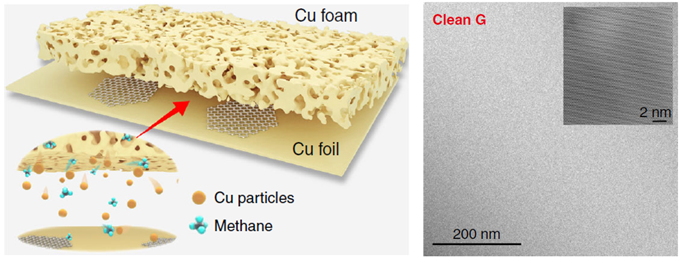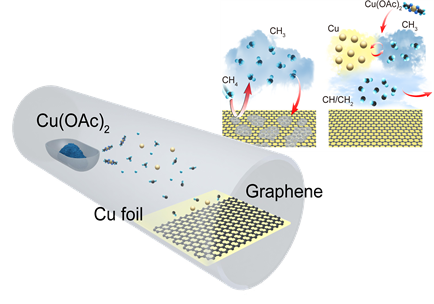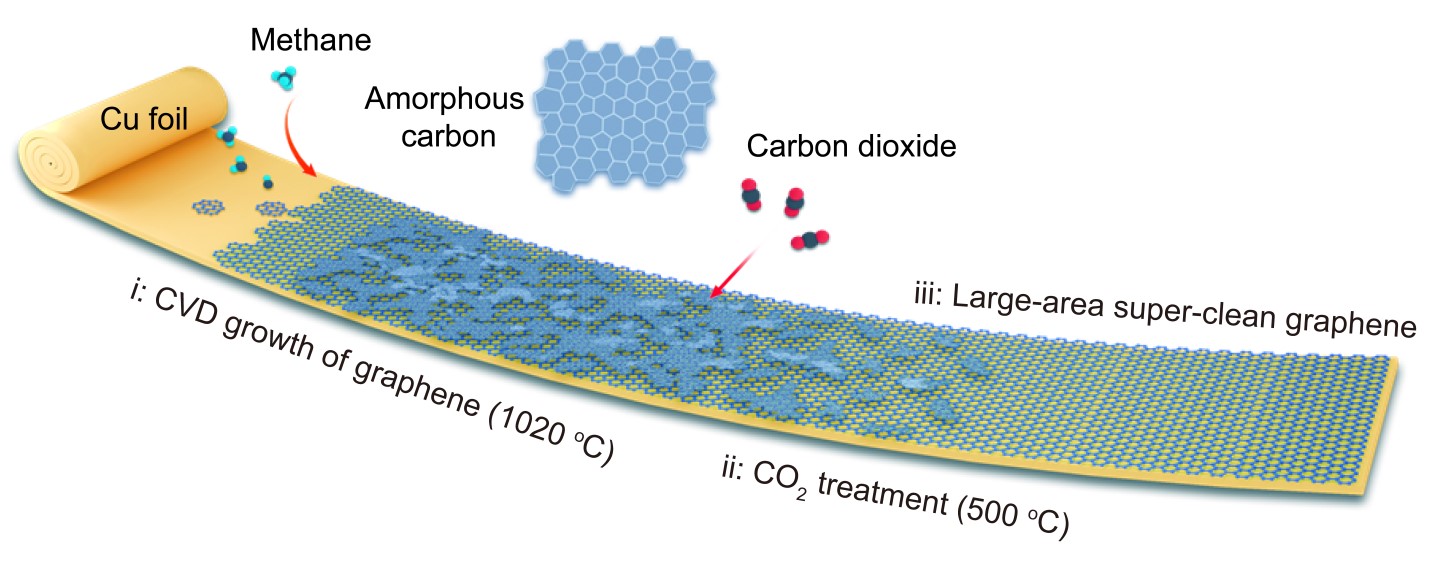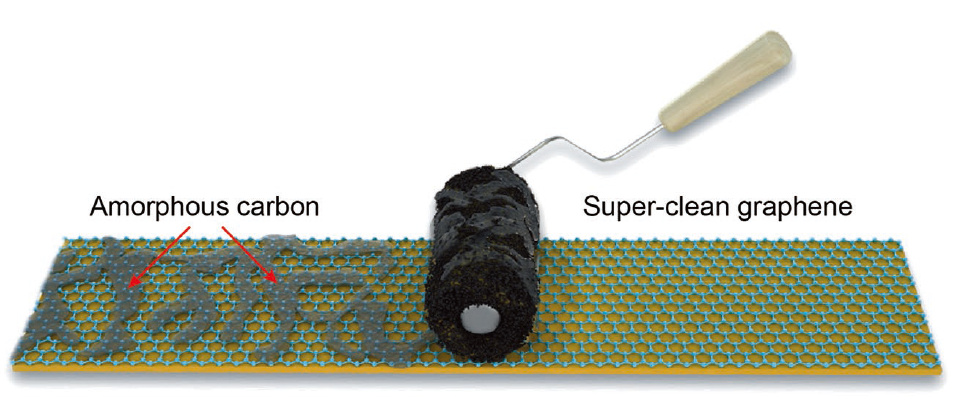[ Instrument Network Instrument Development ] Graphene is known as the “king of materials†because of its excellent properties. It has broad application prospects in many fields, but there are still many problems and challenges in realizing industrialization. Preparation determines that the future, high-quality graphene film control has always been the focus of academic and industry attention. Chemical vapor deposition (CVD) is recognized as the most promising method for preparing graphene films with its excellent controllability and scalability. After nearly ten years of development, many breakthroughs have been made in single crystal size. However, there is still a big gap between the performance and the ideal level of CVD graphene, which has been plaguing the graphene field for a long time.
Recently, Liu Zhongfan's research team and Professor Peng Hailin's research group first revealed the intrinsic pollution problem of CVD graphene, and proposed the method of gas phase reaction regulation. The preparation of ultra-clean graphene was realized by using copper foam assisted catalysis and copper-containing carbon source respectively. (Nature Commun. 2019, 10, 1912; J. Am. Chem. Soc. 2019, 141, 7670). For graphene films that already have intrinsic contamination, they skillfully etch them with carbon dioxide without introducing additional defects, thus successfully preparing large-area ultra-clean graphene films, which is fully compatible with common CVD processes ( Angew. Chem. 2019, 10.1002/ange.201905672). At the same time, they explored the interaction between intrinsic pollutants and graphene, developed an interface control method based on activated carbon, and successfully achieved the surface cleaning of graphene (Advanced Materials 2019, e1902978).
The elimination of intrinsic contaminants of graphene will also greatly reduce the high polymer residues introduced by the transfer, thus having excellent physicochemical properties, creating a new world record for CVD graphene: extremely high mobility (over 1,000,000) Cm2/Vs), extremely low contact resistance (96 Ω μm), extremely high light transmission (97.6%), etc. A series of results related to ultra-clean graphene has opened up a new research direction in the field of graphene preparation.

Figure 1. Excellent properties of ultra-clean graphene. (a) high mobility (b) low contact resistance (c) high light transmission
The preparation methods of these four types of ultra-clean graphene are described below.
1. Preparation of ultra-clean graphene by foam copper assisted catalysis (Nature Communications 2019, 10, 1912)
For the first time, the research team revealed the problem of intrinsic pollution in the CVD process, that is, by-products of carbon source cracking at high temperatures will fall on the surface of graphene to form amorphous carbon pollutants. The authors used high-resolution spherical aberration correction transmission electron microscopy, tip-enhanced Raman (TERS) and atomic force microscopy (AFM) microscopic characterization methods to study the source and composition of graphene intrinsic pollutants in detail, and surveyed the world. CVD samples from various locations confirmed the prevalence of surface contamination of CVD samples and mainly from the high temperature growth process of CVD. In order to solve this problem, the author added foam copper in the CVD growth process to improve the copper vapor content, thereby improving the gas phase cracking catalysis ability, and the generated by-products were fully cracked with the exhaust gas discharge system to prepare a cleanliness of up to 99%. Ultra-clean graphene film.

Figure 2 Preparation of ultra-clean graphene by foam copper assisted method
2. Direct growth of ultra-clean graphene with a copper-containing carbon source (J. Am. Chem. Soc. 2019, 141, 7670)
Unlike foam copper, this JACS article cleverly uses copper-containing carbon source copper acetate instead of methane, which also solves the problem of surface contamination. Since the copper acetate carbon source contains both copper and carbon, it can ensure the continuous and stable supply of copper vapor and the full cracking of hydrocarbons during the reaction, which has unique advantages for preparing ultra-clean graphene with less amorphous carbon pollutants. . This work not only provides a new idea for the preparation of ultra-clean graphene films, but also has certain reference value and significance for the study of the mechanism of graphene preparation.

Figure 3. Preparation of ultra-clean graphene with a copper-containing carbon source
3. Preparation of ultra-clean graphene by CO2 gas selective etching (Angew. Chem. 2019, 10.1002/ange.201905672)
Based on the surface of graphene, amorphous carbon contaminants are rich in defect structure, so they have high chemical reactivity. The authors chose carbon dioxide, a weak oxidant, to achieve high selectivity for amorphous carbon contaminants on graphene films. Etching without causing additional damage to the graphene structure. The method directly treats the graphene film grown by high temperature CVD directly in situ, and the prepared ultra-clean graphene film is still clean after transfer, and has more excellent optical and electrical properties. At the same time, the carbon dioxide etching method has the characteristics of simple, mild, low-cost and high-volume, and is more suitable for large-area and low-cost batch preparation of ultra-clean graphene films.

Figure 4. Preparation of ultra-clean graphene by selective etching of carbon dioxide
Fourth, based on the interface force control "magic sticky roller" clean graphene surface (Advanced Materials 2019, e1902978)
Inspired by the use of “sticky rollers†in life, the authors developed a post-treatment surface cleaning method based on interfacial force regulation – the “Magic Sticky Roller†method, which effectively removes the intrinsic contamination of graphene surfaces. The material, thereby preparing a large area of ​​ultra-clean graphene, has excellent electrical properties, and its Hall mobility is as high as 500,000 cm 2 /V s, which is the highest value of CVD graphene. The method cleverly utilizes the adsorption of activated carbon on pollutants, has certain universality, and can even clean the polymer residue introduced by the transfer process. The activated carbon is bonded into a roller, which has higher cleaning efficiency and is suitable for large-scale preparation of ultra-clean graphene.

Figure 5. Preparation of ultra-clean graphene by the "magic sticky roller" method
Bed Frame Wheels,Bed Frame Casters,Trundle Bed Wheels,Metal Bed Frame Wheels
Kaiping City Sunnywah Electronic CO.,LTD , https://www.knightcasters.com